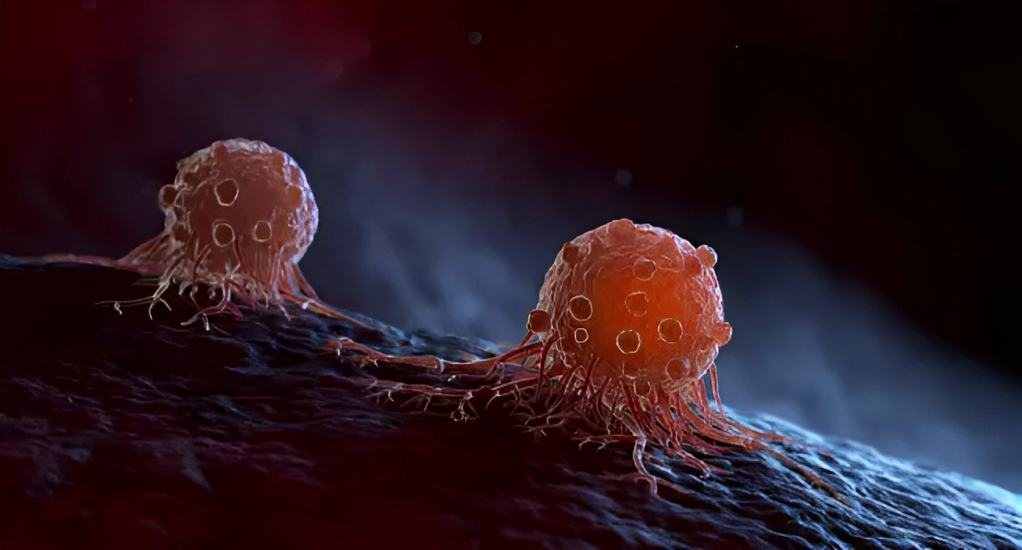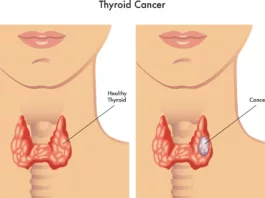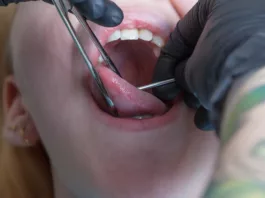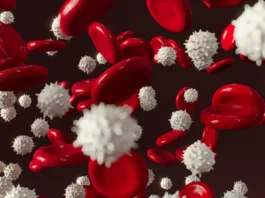What Is Adenoid Cystic Carcinoma?
Adenoid cystic carcinoma (ACC) is an uncommon tumor of the secretory glands that most commonly affects your salivary glands and other regions of the head and neck. This tumor can also affect other body parts like the breast in females, skin, and prostate in males. It is a low-grade, slowly progressing tumor, unlike other carcinomas. It has a tendency to invade your neurons and spread to distant organs through the hematogenous route (spread via blood). This tumor mostly metastasizes to the lungs.
It most commonly occurs in adulthood (at the age of 40-60) but can also occur in children and young ones. It accounts for only 1 % of malignancies of the head and neck and 10 % of all salivary gland tumors.1Din, M. a. U. (2023, April 14). Adenoid cystic cancer. StatPearls – NCBI Bookshelf. https://www.ncbi.nlm.nih.gov/books/NBK557855/2National Organization for Rare Disorders. (2023, July 6). Adenoid cystic carcinoma – Symptoms, causes, treatment | NORD. https://rarediseases.org/rare-diseases/adenoid-cystic-carcinoma/
Epidemiology
It is gender specific and affects 60 % of females and 40 % of males. The overall prevalence of adenoid cystic carcinoma is about 4.5 cases per 100,000 individuals.
In the United States, about 1,200 people are affected with this carcinoma every year, out of which 58% originate from the oral cavity (salivary glands, parotid glands, and pharynx), and 17 % Originate from the respiratory system, 12 % originate from the breast and 13 % from other areas of the body like skin, cervix in females and prostate glands in males.
It most commonly affects females due to the presence of higher targeted sites (breast and genital organs) than males. The highest incidence of this tumor occurs in the 5th to 6th decades of life.3Din, M. a. U. (2023, April 14). Adenoid cystic cancer. StatPearls – NCBI Bookshelf. https://www.ncbi.nlm.nih.gov/books/NBK557855/4National Organization for Rare Disorders. (2023, July 6). Adenoid cystic carcinoma – Symptoms, causes, treatment | NORD. https://rarediseases.org/rare-diseases/adenoid-cystic-carcinoma/
Pathophysiology
Due to its rarity, the pathogenesis and risk factors of it are not well understood. Researchers are conducting further research studies to explore its pathophysiology. However, a few studies on the molecular pathogenesis of this tumor have provided important information about the involvement of gene dysregulation leading to cancer. These studies have demonstrated that deletion of chromosome 1 p 35-36 is involved explicitly in causing adenoid cystic carcinoma.
Another chromosomal abnormality is the translocation (change in position) of the chromosome at 6q and 9p, which accounts for 85% of these tumors. This translocation results in the fusion of the MYB: NFIB gene. Fusion of these genes results in the overproduction of MYB oncoproteins, which promote the proliferation of the tumor.
According to these studies, it is suggested that dysregulated MYB genes are involved in the progression of adenoid cystic carcinoma. However, the exciting feature of this tumor is that other tumor suppressor genes that are usually mutated in other cancers remain unaltered in adenoid cystic carcinoma.5Din, M. a. U. (2023, April 14). Adenoid cystic cancer. StatPearls – NCBI Bookshelf. https://www.ncbi.nlm.nih.gov/books/NBK557855/
Histopathology of Adenoid Cystic Carcinoma
Adenoid cystic carcinoma was first discovered by Bilorth in 1855 and named cylindroma due to its cylindrical growth in the hyaline stroma of the tumor. The histopathology report of this tumor showed an angulated hyperchromatic nucleus with clear cytoplasm. However, there are about three distinct histological patterns of adenoid cystic carcinoma. These are tubular, solid, and cribriform.
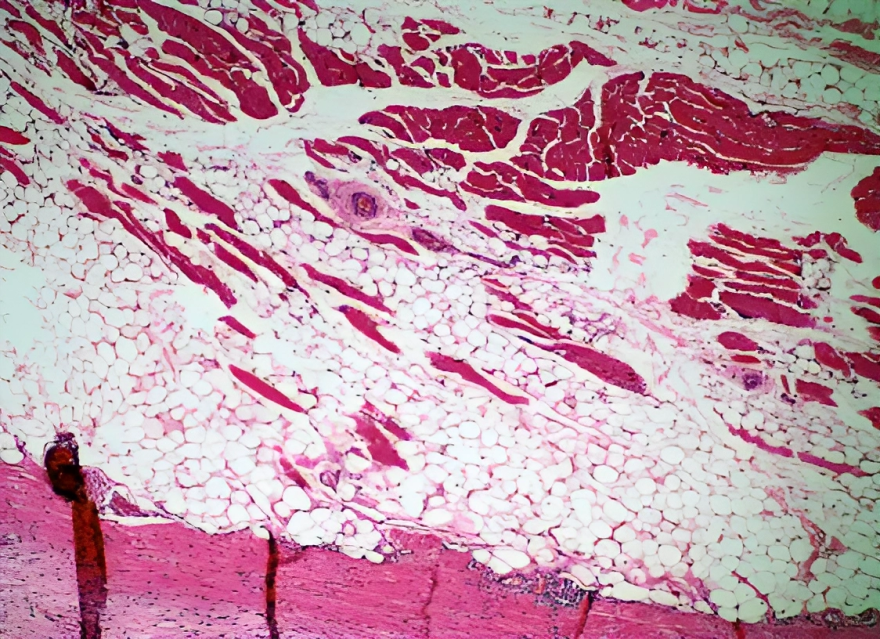
The cribriform pattern of adenoid cystic carcinoma is the most common and shows a Swiss cheese pattern on histology stains. The cribriform pattern contains cyst-like spaces with a scattering of basaloid cells in between. These cysts are false because they do not have glandular lumen. In the tubular pattern of Adenoid cystic carcinoma, tubular-shaped nets are seen with the central necrotic area and increased mitotic activity.
The presence of a solid pattern indicates the aggressiveness of the tumor. The more solid a cancer is, the more malignant and dangerous it is.6Din, M. a. U. (2023, April 14). Adenoid cystic cancer. StatPearls – NCBI Bookshelf. https://www.ncbi.nlm.nih.gov/books/NBK557855/
Causes & Risk Factors of Adenoid Cystic Carcinoma
The exact cause of adenoid cystic carcinoma is not well understood. However, some studies suggest that genetic mutation is the only cause of adenoid cystic carcinoma. As discussed above, a change in the position of chromosomes at 6p and 9q results in the upregulation of MYBL1 protein, causing adenoid cystic carcinoma (found in 90 % of the cases). Moreover, mutations in the NOTCH1 gene have also been found in 15-20 percent of cases of adenoid cystic carcinoma. Patients with mutation in the NOTCH1 gene show poor prognosis.
Unlike other carcinomas of the head and neck (squamous cell carcinoma and basal cell carcinoma), this tumor is not age-dependent and can occur at any age. However, there is no relation between smoking and alcoholism with this tumor.
What are the Symptoms of Adenoid Cystic Carcinoma?
It remains asymptomatic for an extended period. Therefore, it remains neglected. The clinical presentation of these tumors depends upon the location of the cancer and the type of nerve involvement. In addition, this tumor is locally aggressive but has a tendency to metastasize. It is characterized by hard and painless swelling at the head and neck region with or without infiltration.
Facial muscle paralysis or involvement of other nerves in salivary glands tumor indicates malignant proliferation of the tumor.
Salivary Gland Tumor:
Adenoid cystic carcinoma most commonly affects your salivary glands. The clinical presentation of adenoid cystic carcinoma of the salivary gland depends upon the type of glands affected and the size of the tumor. Parotid gland tumors occur in the tail of the gland, while in the submandibular gland tumor, diffuse enlargement of the glands occurs. However, sublingual gland tumors are characterized by mass in the floor of the mouth. You may have the following symptoms:
- Loss of sensation of the lower lip.
- Facial pain (neuropathy).
- Laryngeal salivary gland tumor causes hoarseness of voice, swallowing difficulty, and airway obstruction.
- Tumors with nasal involvement cause nasal obstruction or sinusitis.
Lacrimal Gland Tumor:
Lacrimal glands are present in the eyes and are involved in tear formation. As tumors of the lacrimal gland gain more size, they cause protrusion of the affected eye, leading to vision impairment.
Skin:
This cancer also involves the skin, characterized by the formation of a reddish nodule on the skin, specifically the scalp and external ear canal. This nodule results in pain and discharge (blood or pus) from the affected site. Moreover, a scalp tumor causes nearby hair loss.
Organs:
This tumor also involves body organs such as the breast and cervix in females, the prostate in males, and the esophagus. The clinical manifestations are as follows:7National Organization for Rare Disorders. (2023, July 6). Adenoid cystic carcinoma – Symptoms, causes, treatment | NORD. https://rarediseases.org/rare-diseases/adenoid-cystic-carcinoma/
1- Respiratory Tract Involvement
Adenoid cystic carcinoma can also develop in the lower respiratory tract, specifically mucus glands in the lower third of the trachea (windpipe). As this tumor increases in size, it causes:
- Airway obstruction
- Voice changes
- Breathing difficulty
- Stridor (high-pitched voice during breathing)
- Pyrexia (fever)
- Weight loss
- Inflammation of the lungs
- Coughing
2- Esophagus
Adenoid cystic carcinoma of the esophagus is uncommon and is more prone to metastasis than others. Initially, the patient presents with difficulty swallowing solids and difficulty swallowing liquid as the tumor progresses, resulting in the regurgitation of food and liquid in the mouth. Additionally, it is usually associated with weight loss.
3- Breast
Adenoid cystic carcinoma can also develop in the breast (most commonly unilateral), but unlike other carcinomas, it is less aggressive and rarely metastasizes to regional lymph nodes. This breast tumor is small in size and can be excised surgically with minimal recurrence. The prevalence of adenoid cystic carcinoma causing breast cancer is about 0.1 %.
This tumor most commonly affects the area around the nipple. However, it presents with the following symptoms:
- Discharge from the nipple
- Notching of the nipple
4- Cervix
It can also develop in the cervix after menopause. The symptoms of this tumor are:
- Presence of cervical mass
- Discharge (watery or blood-stained) from the vagina
5- Prostate
This tumor can also develop in the prostate glands, causing:
- Enlarged prostate
- Difficulty in starting urination
- Poor urine outflow
- Increase in frequency of urination
How to Diagnose Adenoid Cystic Carcinoma?
Diagnosis of adenoid cystic carcinoma is mainly based on a detailed history, clinical examination, physical findings, laboratory findings, and radiological findings. Let’s discuss each of them:
History:
A detailed history of the patient helps your doctor diagnose your disease. History points include:
- Biodata
- Weight loss (documented or undocumented)
- Do you feel mass in your head, neck, or any other body area?
- Do you have difficulty breathing?
- Do you have numbness or paresthesia on your face?
- Do you have swallowing difficulty?
- Do you feel the change in your voice?
- Do you have any ear discharge?
- Are you feeling vision impairment?
- Any previous medical illness
- Positive family history
- Drug history
Physical Examination:
A physical examination will allow you to inspect the area of concern and support your diagnosis. Physical examination includes the following steps:
Inspection
During the inspection, your doctor will inspect you thoroughly to check:
- Is there any mass?
- Skin changes surrounding the tumor
- Any scar marks on your body
- Any swelling?
- Is there any discharge coming out from the ear, breast, or vagina?
Palpation
During palpation, the doctor notices the following points:
- Temperature, tenderness
- Check the consistency of the mass (hard or flexible, fixed or mobile)
- Extent of the mass
- Palpate lymph nodes to check lymph node involvement
- Breast palpation
Laboratory Investigations:
Laboratory investigations are usually not required but can sometimes be advised to rule out other comorbidities. These are:
- Complete blood count with erythrocyte sedimentation rate
- White blood count
- Viral markers
- Liver function tests
- Renal function tests
- Genetic testing
- Cervical smear test
- Histopathology
Biopsy:
Biopsy is the investigation of choice for all types of carcinomas. It is the most reliable test to diagnose adenoid cystic carcinoma. A biopsy is a procedure in which a small piece of a diseased portion is excised and sent to the pathology lab for investigation. In the case of salivary gland tumors, a small needle biopsy is required to diagnose the cancer.
In the case of adenoid cystic carcinoma of the lower respiratory tract, bronchoscopy is necessary to take a sample for biopsy. Laryngoscopy is preferable in the case of laryngeal carcinoma to take a biopsy. A fine needle or tru-cut biopsy is helpful in patients having adenoid cystic breast carcinoma.8Din, M. a. U. (2023, April 14). Adenoid cystic cancer. StatPearls – NCBI Bookshelf. https://www.ncbi.nlm.nih.gov/books/NBK557855/
Radiological Investigations:
Radiological examinations are employed to assess tumor size, structure, and extent for grading. CT scans provide a three-dimensional view, revealing the internal system and extent of the cancer.
Moreover, MRI uses a magnetic field and radio waves and provides a cross-sectional image of soft tissue structures. This radiological investigation also investigates lymph node involvement. However, in adenoid carcinoma of the esophagus, barium swallow is advised, and an X-ray image is necessary. Moreover, this X-ray film shows the site of obstruction.
In breast carcinoma, your doctor will advise a breast ultrasound, which helps to show the internal architecture of the breast.
How to Stage Adenoid Cystic Carcinoma?
Staging describes the spread of the tumor. Adenoid cystic carcinoma uses a TNM staging system. TNM staging should be started from the primary site affected by cancer. In this staging system:
T= tells about the size of the tumor and the location of the tumor
N= tells about the spread of the tumor toward the lymph nodes
M= tells about the spread of the cancer to distant sites
These results are combined, and the staging of the tumor is obtained. There are about five stages of adenoid cystic carcinoma. However, doctors use this system to plan treatment accordingly.9Adenoid cystic carcinoma – types of treatment. (2022, August 11). Cancer.Net. https://www.cancer.net/cancer-types/adenoid-cystic-carcinoma/types-treatment
The staging of the cancer is as follows:
T
Tx: There is no evidence of tumor
T0: No tumor is present
T1: Tumor is present, having a size of 2cm, and is non-invasive
T2: Tumor is larger than 2cm and smaller than 4 cm but none-invasive
T3: Tumor is larger than 4 cm but smaller than 6 cm and spreads beyond the salivary glands but doesn’t invade nerves
T4: Tumor is greater than 6 cm and is invasive
N
This tells us about the involvement of lymph nodes. Lymph nodes present near the glands are known as regional lymph nodes, while the lymph nodes of other parts of the body are known as distant lymph nodes. The staging of lymph nodes is as follows.
N0: No lymph node involvement
N0: Cancer involves only one lymph node and has a size of 3 cm or smaller
N2a: Cancer affects one lymph node but has a size greater than 3 cm but smaller than 6 cm
N2b: Cancer involves more than one lymph node but is present on the same side of the tumor and has a size greater than 6 cm
N2c: Cancer affects more than one lymph node on either side of the body and has a size greater than 6 cm
N3: Cancer involves multiple lymph nodes and has a size greater than 6 cm
M:
M describes the spread of the tumor to distant parts of the body, known as metastasis.
Mx: No evidence of metastasis is present
M0: There is no involvement of distant sites of the body
M1: Distant metastasis is present
How to Treat Adenoid Cystic Carcinoma?
The management of adenoid cystic carcinoma requires coordinated efforts of a team of specialists, including general physicians, general surgeons, ENT specialists, oncologists, plastic surgeons, dental surgeons, and audiologists. In addition, a comprehensive treatment plan is made according to the severity of the tumor. Treatment may involve multiple modalities.
Surgery:
Surgical resection remains the treatment of choice, if possible. Surgery depends upon the size and extent of the tumor. In surgical resection, the tumor is excised along with a 2 mm normal margin to avoid recurrence.
As this tumor has a tendency to invade the nerves, it is mandatory to identify the affected nerve during surgery and separate it from the cancer to avoid injury. If there is involvement of lymph nodes, modified radical neck dissection is performed. However, despite good surgical technique, the overall 5-10 years recurrence rate of this tumor is about 75%.
Complications can occur in some surgeries, like during surgical resection of tumors of parotid glands, facial nerves can be injured, leading to facial nerve palsy. However, to cope with this complication, nerve grafts are used to restore nerve function.
Before surgery, you have to talk with your doctor to learn about the prognosis and side effects of the surgery.10Din, M. a. U. (2023, April 14). Adenoid cystic cancer. StatPearls – NCBI Bookshelf. https://www.ncbi.nlm.nih.gov/books/NBK557855/11National Organization for Rare Disorders. (2023, July 6). Adenoid cystic carcinoma – Symptoms, causes, treatment | NORD. https://rarediseases.org/rare-diseases/adenoid-cystic-carcinoma/
Radiation Therapy:
The standard treatment of the tumor is surgical excision followed by radiation therapy. In some cases where surgery can not be performed, only radiation therapy is advised to control the spread of the cancer. Different types of radiation therapy are used depending on the type of tumor, spread, and size of the cancer. These are :
- External beam radiation therapy
- Neutron and proton radiation therapy
The 5-year recurrence rate of the tumor is about 50 percent, even after radiotherapy, 12Din, M. a. U. (2023, April 14). Adenoid cystic cancer. StatPearls – NCBI Bookshelf. https://www.ncbi.nlm.nih.gov/books/NBK557855/13Adenoid cystic carcinoma – types of treatment. (2022, August 11). Cancer.Net. https://www.cancer.net/cancer-types/adenoid-cystic-carcinoma/types-treatment

Medical Management:
Medical management of this tumor includes systemic chemotherapeutic agents and other medicines to cope with complications. However, medications that are used to treat adenoid cystic carcinoma are14Din, M. a. U. (2023, April 14). Adenoid cystic cancer. StatPearls – NCBI Bookshelf. https://www.ncbi.nlm.nih.gov/books/NBK557855/:
- A chemotherapeutic agent (Tyrosine kinase inhibitors and others)
- Strong analgesic
- Antiemetics
- Multivitamins
Follow-up:
A regular follow-up is critical. Follow your doctor’s advice to avoid the recurrence of the disease. Mostly, 6-monthly or yearly follow-up is recommended.

Prognosis of Adenoid Cystic Carcinoma?
This tumor shows a favorable prognosis with a 75 percent 5-year survival rate, while a 10-year survival rate is about 20 percent. The prognosis depends upon the type of tumor, size, and location of the cancer. Moreover, patients having a tumor greater than 4 cm with solid consistency show a poorer prognosis than others. However, other features of poor prognosis are perineural involvement and distant invasion.15Din, M. a. U. (2023, April 14). Adenoid cystic cancer. StatPearls – NCBI Bookshelf. https://www.ncbi.nlm.nih.gov/books/NBK557855/16Pushpanjali, M., Sujata, D. N., Subramanyam, S., & Jyothsna, M. (2014). Adenoid cystic carcinoma: An unusual presentation. Journal of Oral and Maxillofacial Pathology, 18(2), 286. https://doi.org/10.4103/0973-029x.140796
Conclusion
To conclude, it is a rare tumor of secretory glands. It affects multiple body parts, including salivary glands, breast, skin, lacrimal glands, prostate, and upper respiratory tract. It usually remains asymptomatic at earlier stages. Moreover, symptoms of adenoid cystic carcinoma depend on the affected area of the body. Treatment of this tumor depends on standing and grading of the tumor. However, surgery is the treatment of choice.
Refrences
- 1Din, M. a. U. (2023, April 14). Adenoid cystic cancer. StatPearls – NCBI Bookshelf. https://www.ncbi.nlm.nih.gov/books/NBK557855/
- 2National Organization for Rare Disorders. (2023, July 6). Adenoid cystic carcinoma – Symptoms, causes, treatment | NORD. https://rarediseases.org/rare-diseases/adenoid-cystic-carcinoma/
- 3Din, M. a. U. (2023, April 14). Adenoid cystic cancer. StatPearls – NCBI Bookshelf. https://www.ncbi.nlm.nih.gov/books/NBK557855/
- 4National Organization for Rare Disorders. (2023, July 6). Adenoid cystic carcinoma – Symptoms, causes, treatment | NORD. https://rarediseases.org/rare-diseases/adenoid-cystic-carcinoma/
- 5Din, M. a. U. (2023, April 14). Adenoid cystic cancer. StatPearls – NCBI Bookshelf. https://www.ncbi.nlm.nih.gov/books/NBK557855/
- 6Din, M. a. U. (2023, April 14). Adenoid cystic cancer. StatPearls – NCBI Bookshelf. https://www.ncbi.nlm.nih.gov/books/NBK557855/
- 7National Organization for Rare Disorders. (2023, July 6). Adenoid cystic carcinoma – Symptoms, causes, treatment | NORD. https://rarediseases.org/rare-diseases/adenoid-cystic-carcinoma/
- 8Din, M. a. U. (2023, April 14). Adenoid cystic cancer. StatPearls – NCBI Bookshelf. https://www.ncbi.nlm.nih.gov/books/NBK557855/
- 9Adenoid cystic carcinoma – types of treatment. (2022, August 11). Cancer.Net. https://www.cancer.net/cancer-types/adenoid-cystic-carcinoma/types-treatment
- 10Din, M. a. U. (2023, April 14). Adenoid cystic cancer. StatPearls – NCBI Bookshelf. https://www.ncbi.nlm.nih.gov/books/NBK557855/
- 11National Organization for Rare Disorders. (2023, July 6). Adenoid cystic carcinoma – Symptoms, causes, treatment | NORD. https://rarediseases.org/rare-diseases/adenoid-cystic-carcinoma/
- 12Din, M. a. U. (2023, April 14). Adenoid cystic cancer. StatPearls – NCBI Bookshelf. https://www.ncbi.nlm.nih.gov/books/NBK557855/
- 13Adenoid cystic carcinoma – types of treatment. (2022, August 11). Cancer.Net. https://www.cancer.net/cancer-types/adenoid-cystic-carcinoma/types-treatment
- 14Din, M. a. U. (2023, April 14). Adenoid cystic cancer. StatPearls – NCBI Bookshelf. https://www.ncbi.nlm.nih.gov/books/NBK557855/
- 15Din, M. a. U. (2023, April 14). Adenoid cystic cancer. StatPearls – NCBI Bookshelf. https://www.ncbi.nlm.nih.gov/books/NBK557855/
- 16Pushpanjali, M., Sujata, D. N., Subramanyam, S., & Jyothsna, M. (2014). Adenoid cystic carcinoma: An unusual presentation. Journal of Oral and Maxillofacial Pathology, 18(2), 286. https://doi.org/10.4103/0973-029x.140796

